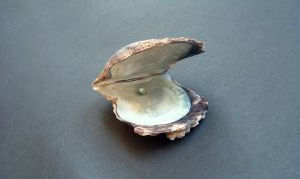 I’m working my way through the colors section to give it some new information and updated images. In fact, today’s dilution wasn’t discovered until equine color genetics testing was made possible.
I’m working my way through the colors section to give it some new information and updated images. In fact, today’s dilution wasn’t discovered until equine color genetics testing was made possible.
Dilutions
There are an array of dilution genes which affect the two base colors as well as those affected by modifiers and white patterns. Today I want to share a little about the pearl dilution which is incredibly rare and only recently found in a few specific breeds.
Pearl Dilution
Also called barlink or apricot, the pearl dilution has an effect on all base colors, but requires a little something extra to physically change the color of blacks or bays. In order to change coat color in darker animals, there must be a double dose of the pearl dilution or a combination of pearl and a cream dilution.
Pearl Colors
For something so recently discovered, pearl is actually responsible for a large scope of color. Most of them carry traits associated with other modifiers and dilutions – pearl animals are often registered incorrectly.
Single-Dilution
One dose of pearl has no affect on black based animals (including bay), however it may have a lightening effect on chestnut body hair. A single dilution may also have pink freckles around mucus membranes and amber eyes.
Double-Dilution
A double dose of pearl on a chestnut or bay base produces animals that look similar to the respective champagne dilutions. On a black base it produces a light reddish coat with darker points similar to a red dun.
Pearl + Cream
The combination of the two produces a creamy white very similar to that of a double-dilution cream. Chestnut bases can produce anything from a cremello-type white to a light gold with flaxen mane and tail. Bay and black produce a smoky golden coat with brown mane, tail and points.
I’m currently on the hunt for images of animals carrying the pearl dilution. I’ll gladly give credit and link to anyone who has images I can use in my colors section.
Learn More About Color
Be sure to visit the new and improved color section for more information about pearl horses and stay tuned, next week we’ll continue the dilution genes by looking at another newly discovered gene, the mushroom dilution gene which is usually mistaken for silver dapple.
My tricolor paint Tennessee Walker mare was bred to a Blue Roan TW stallion before I bought her. The foal was born chestnut with white legs and a large white blaze. At one month old, I see dark patches of skin on the backs of his legs, on his muzzle and around his eyes. His mane and tail remain chestnut as does most of his body. I don’t know what to expect color wise..
I have bred a double pearl registered pre colt. You can see him on my website site and on Facebook, pearl of peace. I can send you pictures if you are interested. He is the first one born in England. Christine